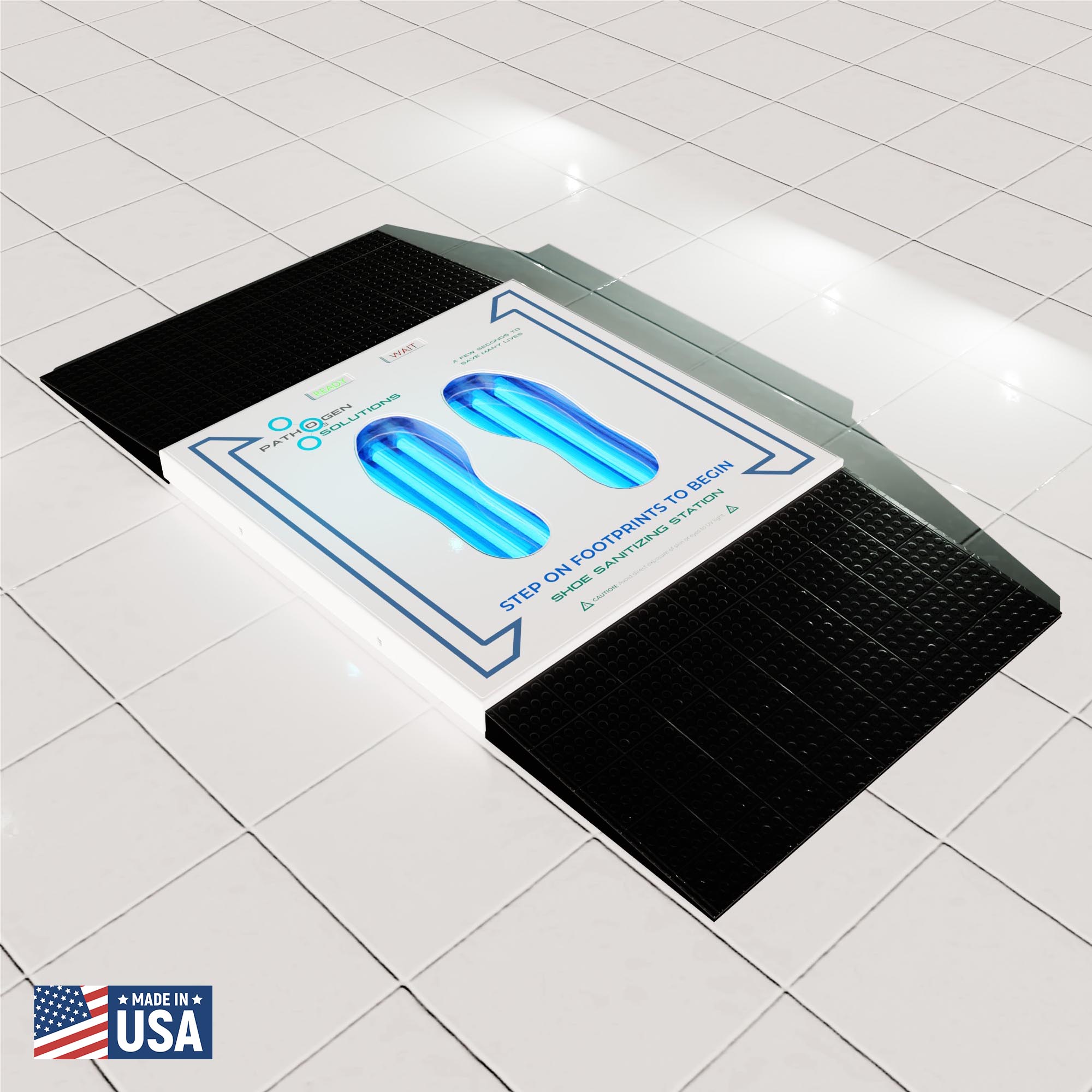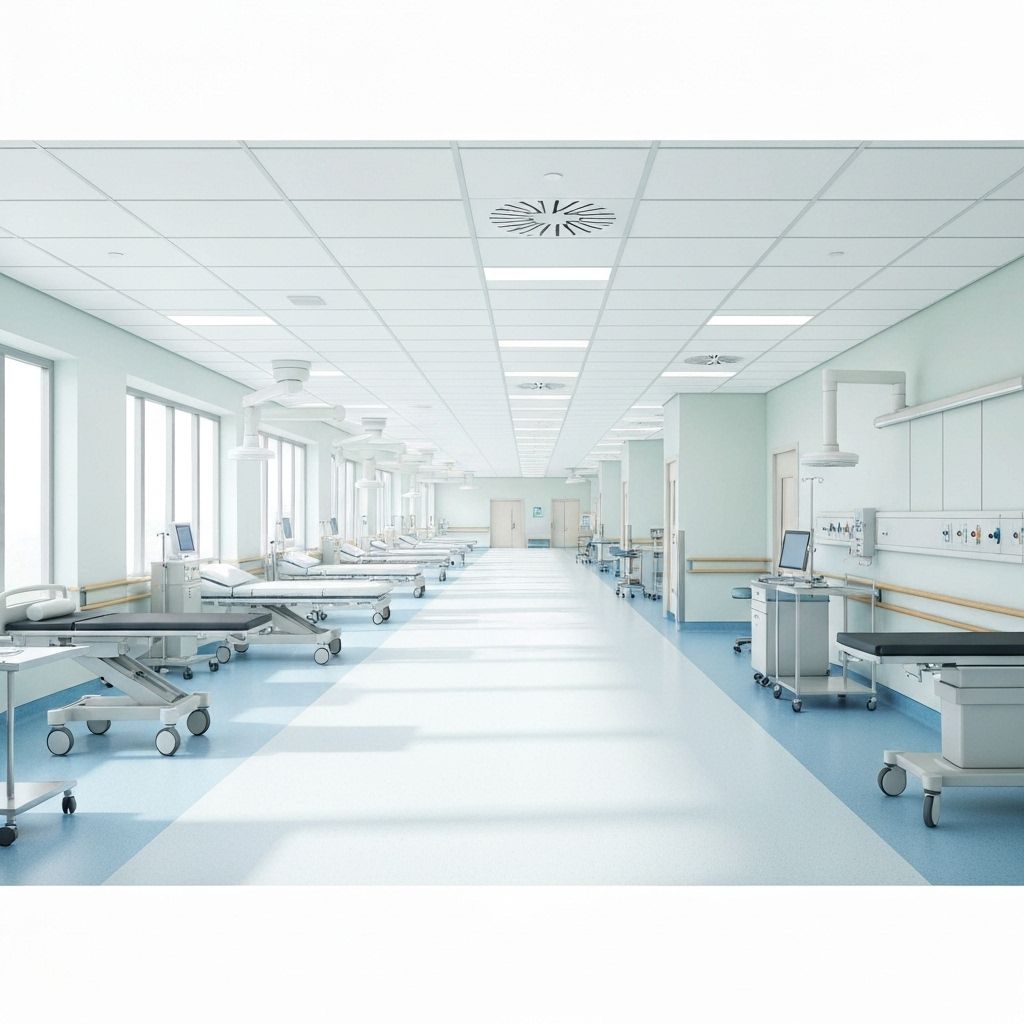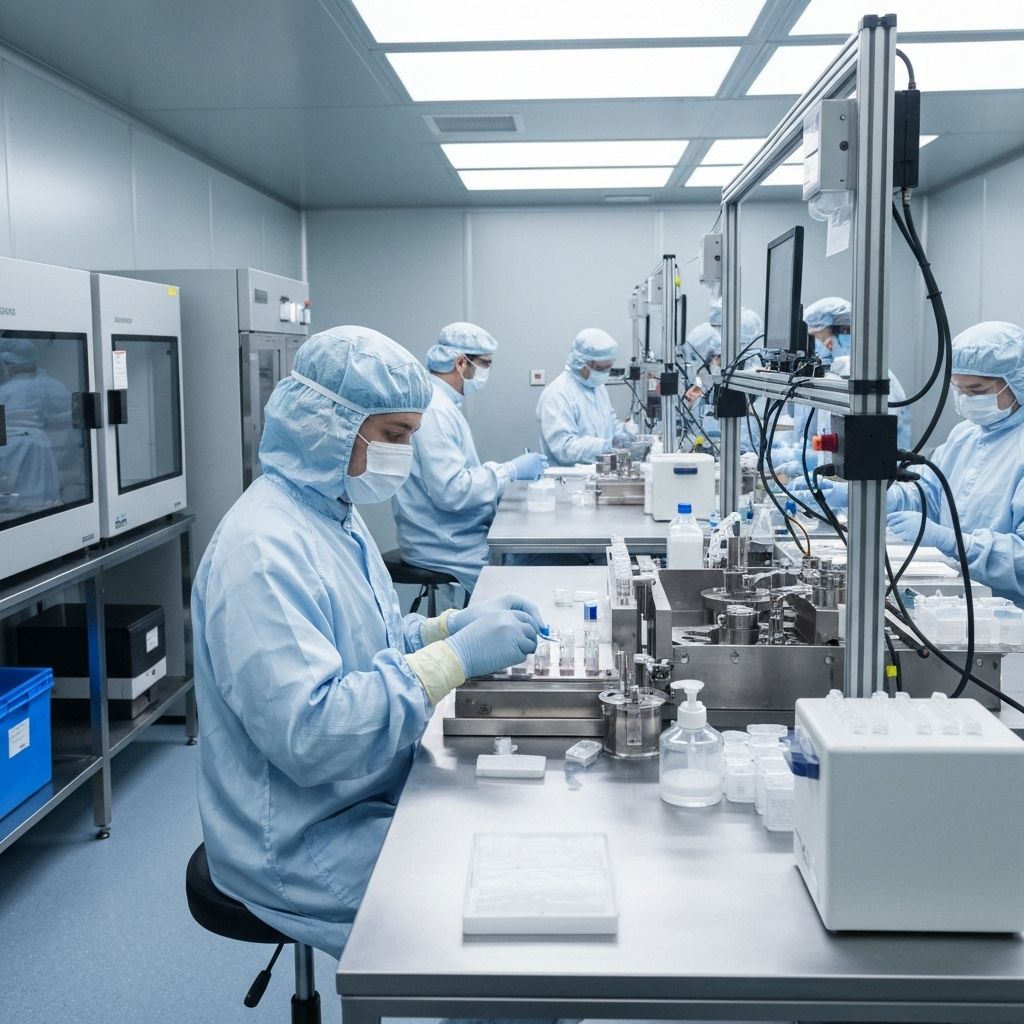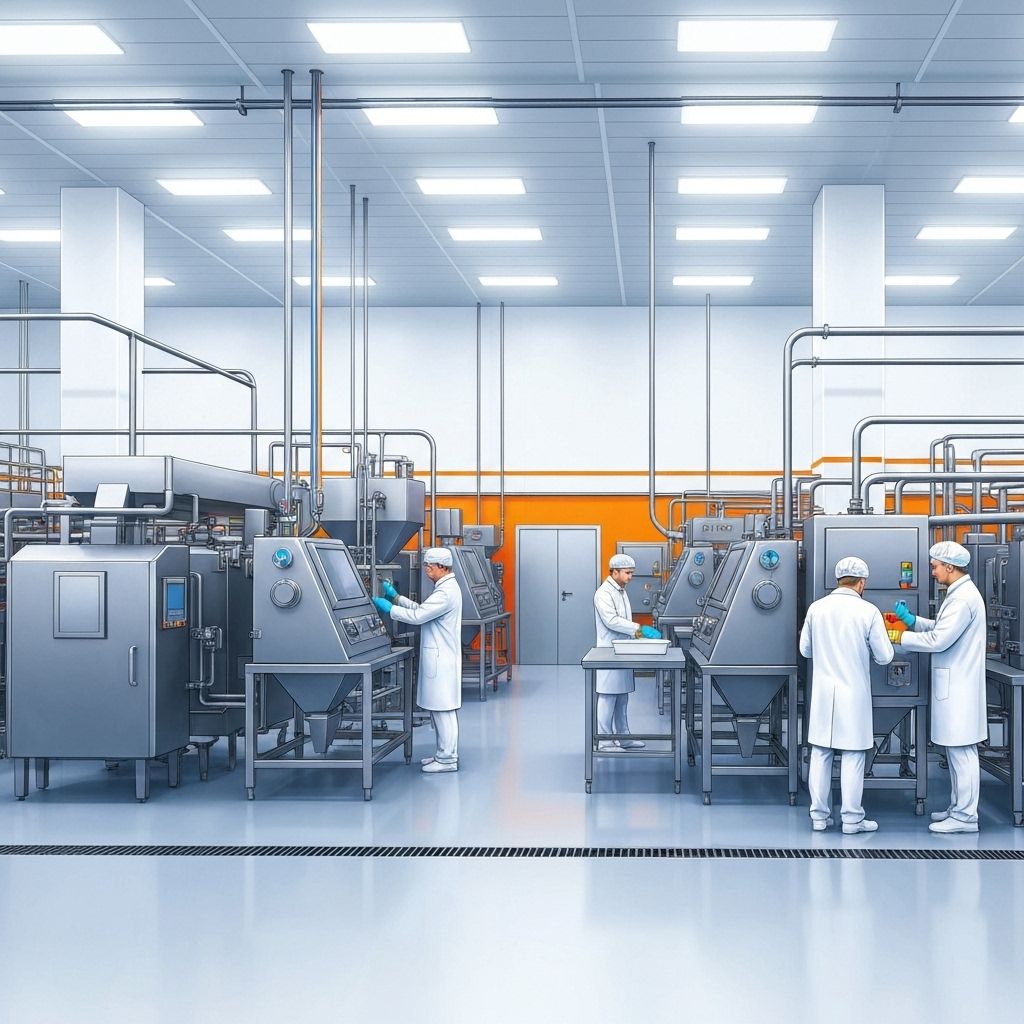One Technology.
Endless Applications.
Automated UV-C + Ozone systems that reduce up to 99.9993% of shoe-borne microbes—protecting your people, facilities, and products across every industry.
From hospitals to food plants, pharmaceutical labs to transportation hubs—our proven dual-technology approach creates cleaner, safer environments without chemicals, training, or ongoing maintenance.

Industries We Serve
Proven microbial reduction technology across multiple sectors

Healthcare / Long-term Care
Pathogen mitigation and indoor environmental quality

Pharma / Biotech
Biosafety and microbial control for cleanrooms

Food Processing
Hygiene, sanitation, and audit readiness

Controlled Environment Agriculture
Biosecurity for indoor grow operations

Transportation
Microbial reduction in high-traffic transit areas

Government Services
Mission-critical sanitation for emergency response

Automated UV-C + Ozone Technology That Works While You Do
The UVZone system delivers continuous pathogen reduction through automated UV-C + Ozone dual technology. Installed at entry points, it reduces shoe-borne microorganisms as people walk through—combining 254nm UV-C light with controlled ozone for maximum efficacy. No chemicals, no training, no disruption to your operations.
Subscription-Based Model
Get enterprise-grade pathogen reduction without the capital expense. Our subscription includes everything you need:
- Zero upfront equipment costs
- Installation and setup included
- Ongoing maintenance and support
- Lamp replacements and service
- Predictable monthly pricing
- Scalable across multiple facilities
How It Works
Three simple steps. Zero training required. Instant pathogen reduction with UV-C + Ozone.

See UVZone in Action
Watch how easy it is to reduce pathogens at every entry point
Step On
Walk onto the UVZone mat at any entry point
Pressure sensors detect footwear and activate the system automatically
UV-C + Ozone Treatment
Dual-action UV-C + Ozone technology treats shoe soles in 6-10 seconds
254nm UV-C light and controlled ozone work synergistically to reduce pathogens
Walk Through
Continue into your facility with reduced microbial load
Up to 99.9993% reduction verified by independent labs
Free consultation • No obligation • Custom quote
Calculate Your ROI
See how much you could save by preventing contamination events with UVZone shoe sanitization
Hospital-acquired infections, patient safety incidents
Total workforce entering your facility daily
Include confirmed incidents, near-misses, and suspected contamination events
Total locations requiring UVZone systems (enterprise pricing available)
Recommended System Configuration:
• 2 UVZone units per facility
• 2 total units across all locations
Based on 1 unit per 75 employees for optimal coverage
Your Estimated Results
• System investment: $12,000
• Annual subscription: $2,400
• Net annual benefit: $249,600
Ready to see these savings in your facility? Get a custom quote based on your specific needs, facility layout, and deployment requirements.
* Estimates based on industry-specific contamination costs and independent lab efficacy data. Actual results vary by facility. Conservative estimate assumes 70% reduction in contamination events based on 99.9% pathogen elimination efficacy from NSF International testing. Individual results depend on facility conditions, compliance, and implementation.
The Data Speaks for Itself
Independent lab testing and real-world results prove UV-C + Ozone effectiveness
Third-Party Lab Verified Efficacy
NSF International, CREM CO. Labs, Microchem Labs
| Pathogen | % Reduction | Log Reduction | Time | Lab |
|---|---|---|---|---|
| Candida auris | 99.9993% | 5.16 log₁₀ | 10 seconds | NSF International |
| E. coli (ATCC 11229) | 99.9989% | 4.96 log₁₀ | 10 seconds | NSF International |
| CRE (K. pneumoniae) | 99.9986% | 4.86 log₁₀ | 10 seconds | NSF International |
| Salmonella enterica | 99.9980% | 4.81 log₁₀ | 8 seconds | Microchem Labs |
| MRSA (ATCC 33592) | 99.9969% | 4.51 log₁₀ | 10 seconds | NSF International |
| Murine Norovirus | 99.9951% | 4.31 log₁₀ | 6 seconds | CREM CO. Labs |
| Listeria monocytogenes | 99.9940% | 4.21 log₁₀ | 8 seconds | Microchem Labs |
| Cronobacter sakazakii | 99.9910% | 4.04 log₁₀ | 8 seconds | Microchem Labs |
| Human Coronavirus 229E | 99.9796% | 3.69 log₁₀ | 8 seconds | CREM CO. Labs |
| C. difficile (spores) | 99.9960% | 4.40 log₁₀ | 10 seconds | NSF International |
* Full test reports available upon request. Testing conducted 2019-2021.
Certifications & Compliance
Get detailed efficacy data for your specific pathogens of concern
Backed by Independent Research
Multiple third-party studies from credentialed laboratories validate UV-C + Ozone efficacy across diverse pathogen types and real-world conditions
Efficacy of UV-C + Ozone Against Healthcare Pathogens
Christine Greene, MPH PhD, Bryan D. Schindler, PhD
NSF International - Applied Research Center
Inactivation of Influenza A Virus Subtypes
Nader M. Sobhy, Angie Quiñonez Muñoz, et al.
University of Minnesota - Veterinary Diagnostic Laboratory
Swine Virus Inactivation on Footwear Materials
Angie Quiñonez Muñoz, Trisha Sharma, et al.
University of Minnesota - College of Veterinary Medicine
Murine Norovirus Elimination Study
CREM Co. Laboratories
CREM Co. Labs, Ontario, Canada
Technical Specifications
Specifications verified by . UV-C output measured at glass surface. Ozone concentration measured under and around shoe base.
Broad-Spectrum Antimicrobial Efficacy
Gram-Positive Bacteria
- MRSA (99.9969%)
- VRE (99.9863%)
- C. difficile spores (99.9960%)
Gram-Negative Bacteria
- E. coli (99.9989%)
- P. aeruginosa (99.9976%)
- CRE (99.9986%)
- Salmonella (99.9980%)
Fungi & Yeasts
- Candida auris (99.9993%)
- Aspergillus brasiliensis (96.1744%)
Viruses
- Murine Norovirus (99.9951%)
- Human Coronavirus 229E (99.9796%)
- Influenza A (93-99%)
- PRRSv (≥99%)
- PEDv (98.55-99%)
What Our Clients Say
Real results from facilities across multiple industries
“Patho3Gen's UVZone system has transformed our infection control protocols. We've seen a dramatic reduction in HAIs since implementation.”
“The ROI was clear within 6 months. Lower contamination rates, reduced downtime, and peace of mind for our entire operation.”
“Our clean room validation results have never been better. Patho3Gen delivers consistent, verifiable sanitation every single time.”
What You'll Get
- Free facility assessment
- Custom system design
- ROI analysis for your facility
- No-obligation quote
- Implementation timeline
- Financing options available
Prefer to talk now?
Get Started Today
Fill out the form below and we'll contact you within 24 hours